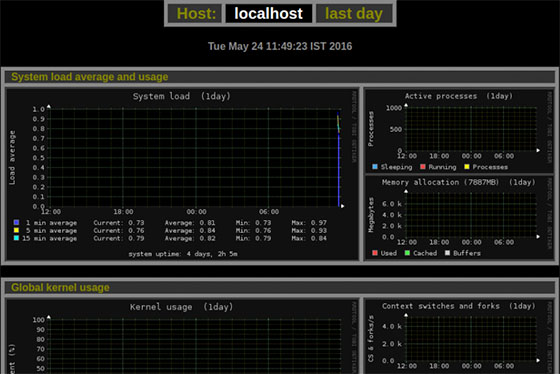
In this tutorial, we will show you how to install Monitorix on Ubuntu 20.04 LTS. For those of you who didn’t know, Monitorix is a free, open-source, lightweight system monitoring tool designed to monitor as many services and system resources as possible. It has been created to be used under production Linux/UNIX servers, but due to its simplicity and small size can be used on embedded devices as well. Monitorix also is run on most Linux-based operating systems including, CentOS, Debian, Ubuntu, FreeBSD, OpenBSD, and NetBSD.
This article assumes you have at least basic knowledge of Linux, know how to use the shell, and most importantly, you host your site on your own VPS. The installation is quite simple and assumes you are running in the root account, if not you may need to add ‘sudo‘ to the commands to get root privileges. I will show you through the step-by-step installation of the Monitorix system monitoring tool on Ubuntu 20.04 (Focal Fossa). You can follow the same instructions for Ubuntu 18.04, 16.04, and any other Debian-based distribution like Linux Mint.
Prerequisites
- A server running one of the following operating systems: Ubuntu 20.04, 18.04, and any other Debian-based distribution like Linux Mint.
- It’s recommended that you use a fresh OS install to prevent any potential issues.
- SSH access to the server (or just open Terminal if you’re on a desktop).
- A
non-root sudo useror access to theroot user. We recommend acting as anon-root sudo user, however, you can harm your system if you’re not careful when acting as the root.
Install Monitorix on Ubuntu 20.04 LTS Focal Fossa
Step 1. First, make sure that all your system packages are up-to-date by running the following apt commands in the terminal.
sudo apt update sudo apt upgrade
Step 2. Installing Monitorix on Ubuntu 20.04.
Now we download the latest version of Monitoring from their official website:
wget https://www.monitorix.org/monitorix_3.13.1-izzy1_all.deb
Next, install the downloaded file using the following command:
sudo dpkg -i monitorix_3.13.1-izzy1_all.deb
You can verify the installed version of Monitorix by running:
monitorix -v
Once Monitorix is installed, it is started and enabled to run on system boot by default:
sudo systemctl start monitorix sudo systemctl enable monitorix
Step 3. Configure Monitorix on Ubuntu.
You need to do some configuration tuning according to your system details. You can edit it with the following command:
nano /etc/monitorix/monitorix.conf
Change the following lines:
title = Monitorix Monitoring Server hostname = Ubuntu-20.04-LTS host = debian10 hosts_deny = all hosts_allow = 192.168.1.0/24 enabled = y
Once this is done we will restart the Monitorix service using the following command:
sudo systemctl restart monitorix
Step 4. Accessing Monitorix on Ubuntu.
Once successfully configured, navigate your browser to http://localhost:8080/monitorix or http://Your-IP-Address:8080/monitorix and choose the Graph and hit ok to view the graph.

Congratulations! You have successfully installed Monitorix. Thanks for using this tutorial for installing the Monitorix system monitoring tool on your Ubuntu 20.04 LTS Focal Fossa system. For additional help or useful information, we recommend you check the official Monitorix website.